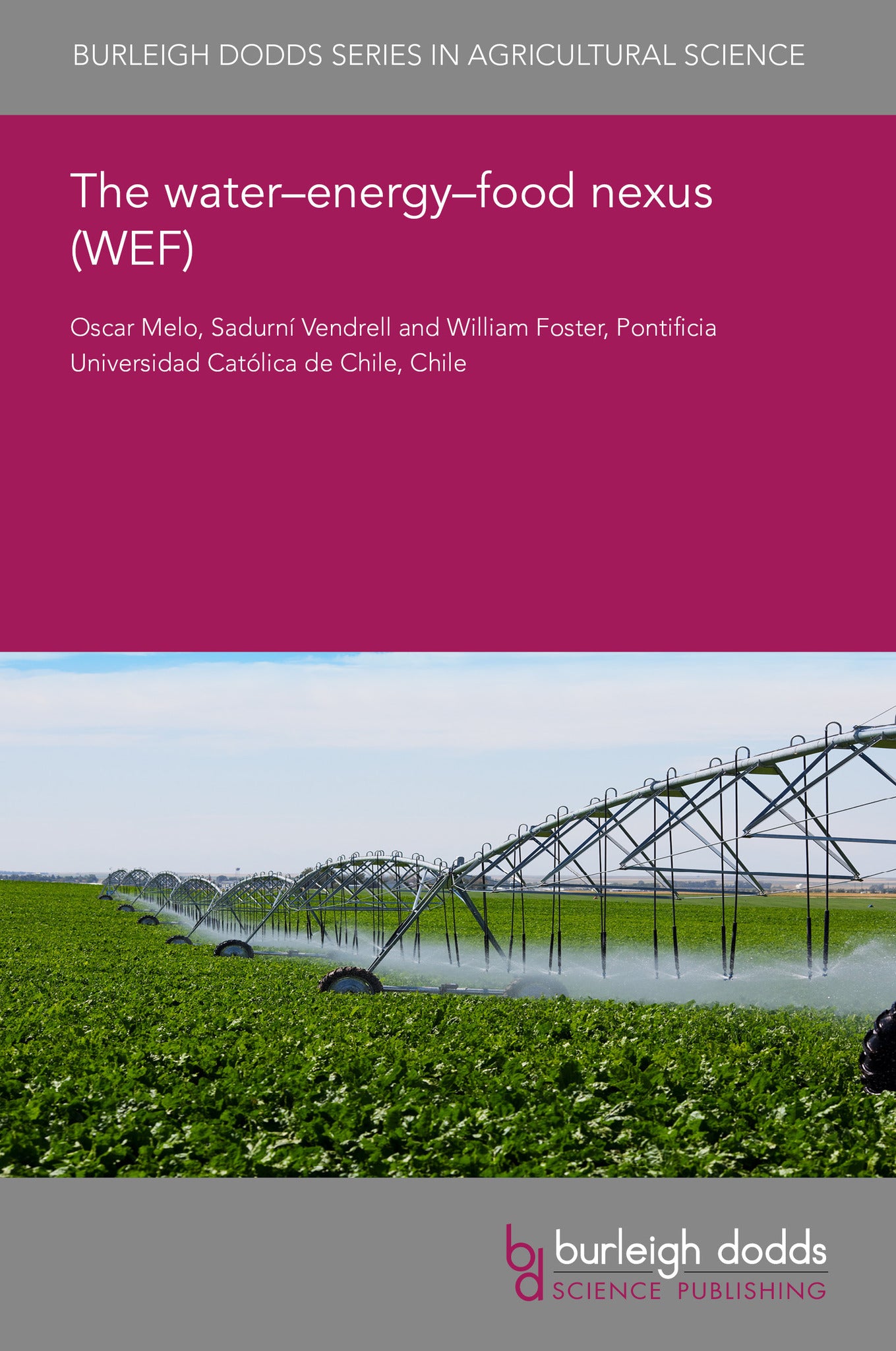We're sorry. An error has occurred
Please cancel or retry.
The water-energy-food nexus (WEF)

Some error occured while loading the Quick View. Please close the Quick View and try reloading the page.
Couldn't load pickup availability
- Format:
-
10 June 2024

This chapter briefly introduces the nexus approach, focussing on water issues. It is not an attempt to summarise the vast literature on the topic but rather to illustrate the concept by presenting selected examples of each element of the nexus and their interlinkages (water–energy, energy–food, and food–water) from a global perspective. We also present three case studies that use the nexus approach in Andean countries to analyse the trade-offs between the elements that arise when designing sustainable development strategies. Two of the case studies use a water–energy–food–environment modelling toolkit that is applied to agricultural development in Peru and Ecuador. The third case study shows a water–food–energy model that links water used in agriculture and hydroelectricity to evaluate climate change adaptation strategies.

TECHNOLOGY & ENGINEERING / Agriculture / Irrigation, Irrigation and water management, TECHNOLOGY & ENGINEERING / Agriculture / Agronomy / Crop Science, TECHNOLOGY & ENGINEERING / Agriculture / Sustainable Agriculture, TECHNOLOGY & ENGINEERING / Agriculture / Agronomy / Soil Science, Sustainable agriculture, Agricultural science, Agronomy and crop production

- 1 Introduction
- 2 The nexus and its elements: a global perspective
- 3 Understanding nexus elements and their interlinkages
- 4 Case studies of the nexus in Andean countries
- 5 Conclusion
- 6 Where to look for further information
- 7 References



